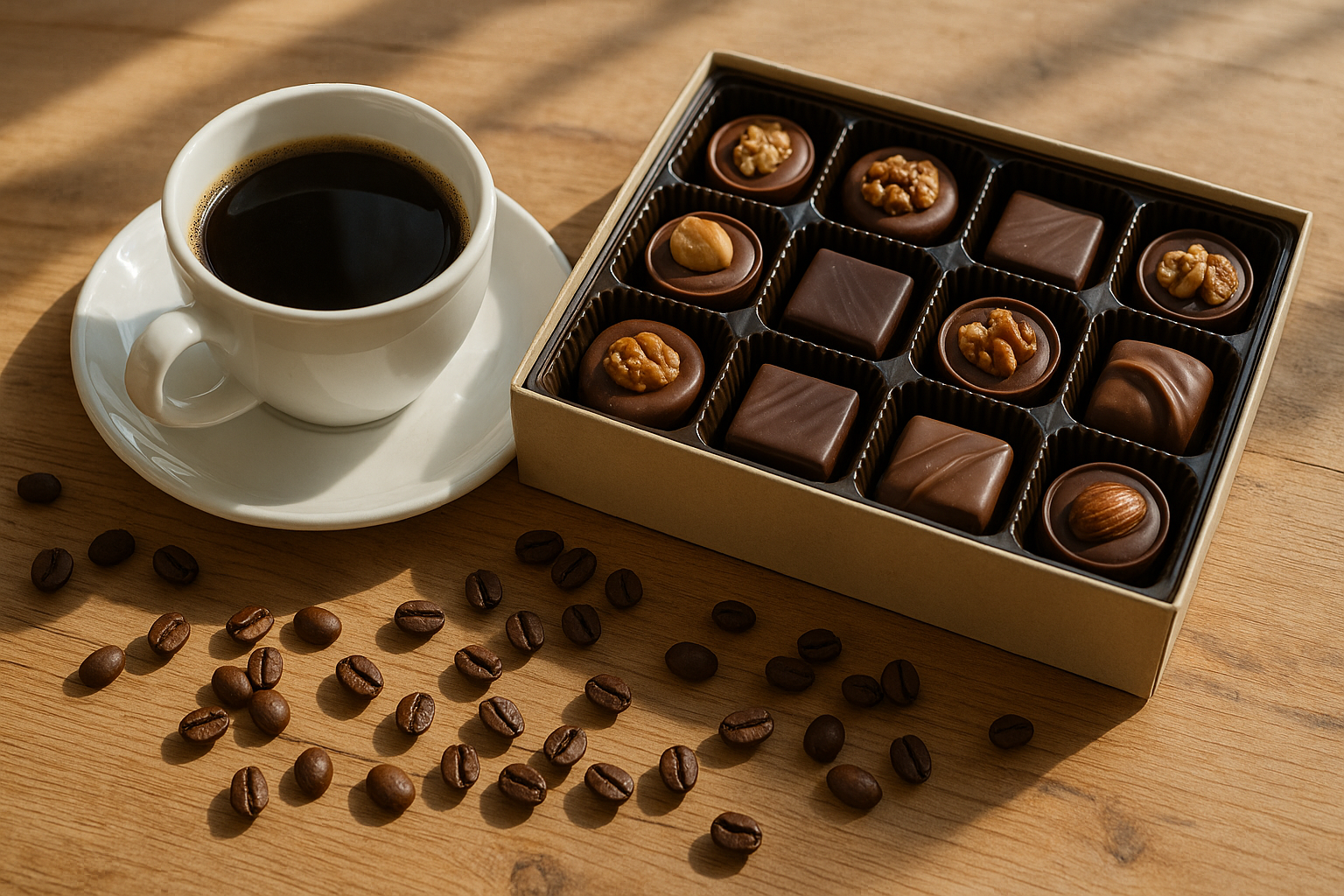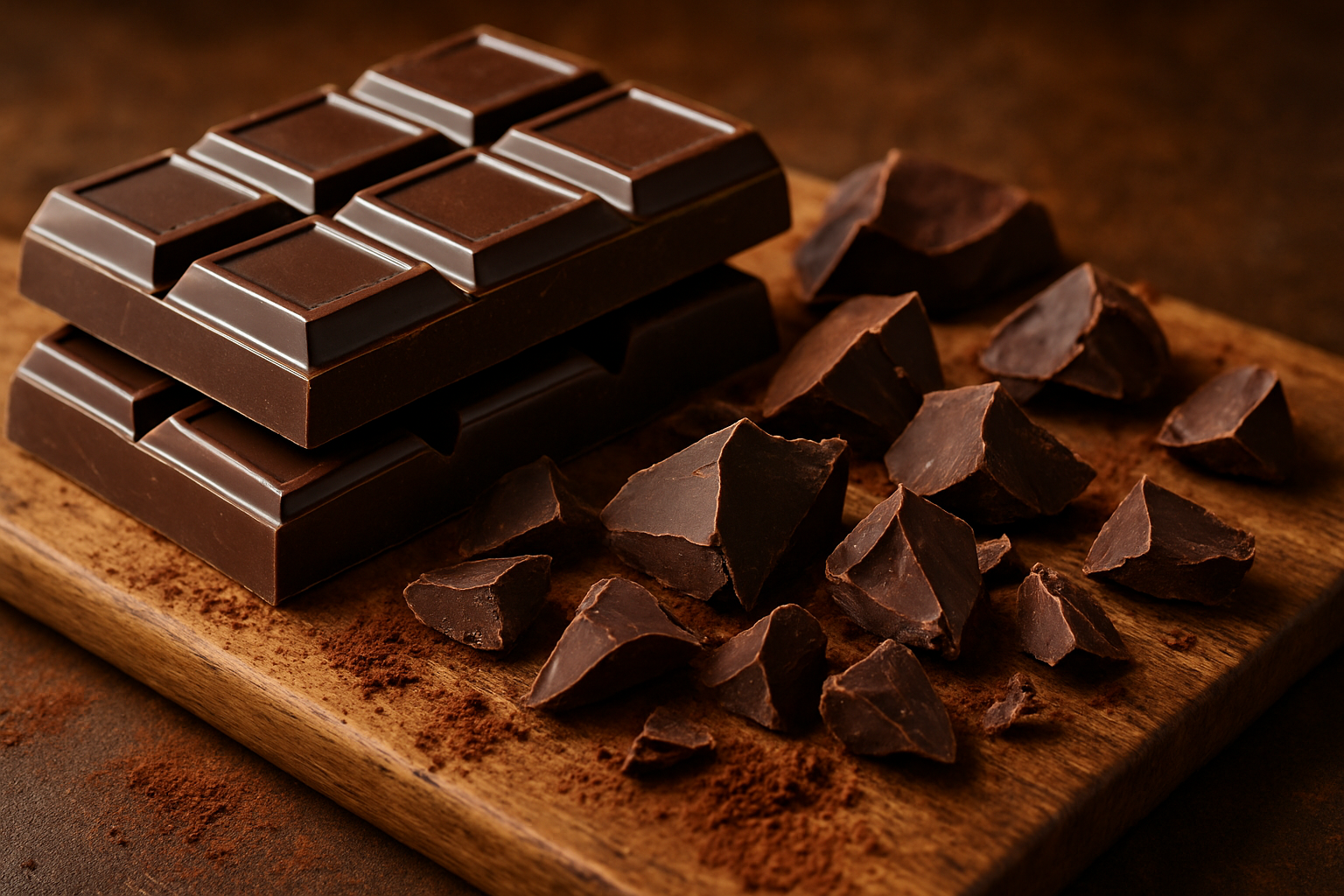From a bitter, exotic drink reserved for the elite to the ubiquitous comfort food found in every corner shop, the journey of chocolate in Britain is a fascinating tale interwoven with social change, industrial innovation, and evolving tastes. From the grand Georgian drawing rooms to the artisan chocolatiers of today, British chocolate history and our relationship with cocoa has transformed dramatically, culminating in the gourmet truffles we cherish from fine Chocolatiers such as ourselves, Friars of Keswick.
The Georgian Era: Chocolate as a Royal Indulgence (1700s - early 1800s)
British chocolate history goes back a long way, in fact Chocolate first arrived on British shores in the early 17th century, primarily as a luxurious beverage. Unlike the solid bars we know, it was a rich, spiced drink, often thickened with egg yolks or milk, a truly indulgent treat. Chocolate houses, akin to coffee houses, emerged in London in the mid-1600s, offering this exotic new drink to the wealthy. Samuel Pepys, the famous diarist, even mentions visiting these establishments.
During the Georgian era, chocolate remained an exclusive pleasure. It was exceedingly expensive, imported from the Americas and meticulously prepared. Recipes from this period often reveal elaborate concoctions, far removed from the simple hot chocolate mixes of today. It was a symbol of status, a rare indulgence enjoyed by the aristocracy and gentry. British chocolate history has changed considerably over the years. Early British chocolate makers were more akin to apothecaries or grocers, grinding cocoa beans to order for their discerning clientele. Firms like Joseph Fry's, founded in Bristol in 1761, started as apothecaries and later moved into chocolate production, though still primarily for drinking, but bringing us closer to the traditional chocolate we know today.
The Victorian Age: The Rise of the Chocolate Bar (1837 - 1901)
A defining moment in British chocolate history arrived in Victorian times. The Victorian era marked the true democratisation of chocolate in Britain, transitioning it from a drink to an edible confection. This transformation was largely driven by two key innovations: the cocoa press and the development of the solid chocolate bar.
In 1828, Dutch chemist Coenraad Johannes van Houten invented the cocoa press, a revolutionary machine that could separate cocoa butter from the cocoa solids. This produced a purer, less fatty cocoa powder, ideal for mixing with sugar and, crucially, allowed for the reintroduction of some cocoa butter to create a smooth, mouldable paste.
Building on this, Joseph Fry & Sons in Bristol are credited with producing the world's first mass-produced chocolate bar in 1847. Fry’s bar was considered by many as the herald of the traditional chocolate we know today. By adding melted cocoa butter to Dutch cocoa, they created a solid, eatable chocolate. This breakthrough was quickly followed by other Quaker families who would become giants of the British chocolate industry: Cadbury (founded 1824 in Birmingham by John Cadbury, initially selling tea, coffee, and drinking chocolate) and Rowntree (founded 1862 in York by Henry Isaac Rowntree). Cadbury and Rowntree, well known names in the production of our traditional chocolate bars were played a huge part in British chocolate history.
These Quaker families, with their strong social conscience, played a pivotal role in the industry's growth, often focusing on providing healthier, alcohol-free alternatives to the masses. They built model villages for their workers, like Cadbury's Bournville, reflecting their progressive values.
The late 19th century saw further advancements. Rodolphe Lindt’s invention of the conch in 1879 brought an unparalleled smoothness and melt-in-the-mouth quality to chocolate, a texture that defines modern chocolate. This period also saw the introduction of iconic bars still enjoyed today: Fry's Chocolate Cream (1866) and Cadbury Dairy Milk (1905), which famously boasted a "glass and a half of fresh milk" in every half-pound bar, revolutionising milk chocolate in Britain. Terry's of York, founded even earlier in 1767, also rose to prominence, eventually creating the much-loved Terry's Chocolate Orange. These three are synonymous with British chocolate history and the formation of our traditional chocolate bars.
The 20th Century: Mass Production and Wartime Rationing
The early 20th century cemented chocolate's place in British daily life. The industry expanded rapidly, with companies vying for market share through innovative products and clever advertising. Filled chocolates, chocolate biscuits, and new confectionery bars proliferated. Brands like Aero (Rowntree, 1935), Kit Kat (Rowntree, 1935), Crunchie (Fry's, 1929, later Cadbury), and Mars Bar (Mars, 1932) became household names.
However, the two World Wars brought significant challenges. Rationing, particularly during and after World War II, severely impacted chocolate production and availability. Ingredients like sugar and cocoa were scarce, leading to smaller, often lower-quality bars. Chocolate became a morale booster, a precious commodity distributed in ration packs to soldiers and civilians alike. It wasn't until 1953, a full eight years after the end of the war, that chocolate rationing finally ended in the UK, ushering in an era of greater abundance and variety.
The latter half of the 20th century saw consolidation in the industry, with many smaller firms being acquired by larger players. British brands expanded internationally, and global chocolate trends began to influence the domestic market marking another step in British chocolate history.
FRIARS
Crystallised Fondant Creams
A gift box featuring a delightful collection of traditional English crystallised fondant creams. This sugar confection includes fruit flavours such as lemon, violet and lime. These are made in small batches with limited stocks.
Coffee Creams
One of our most popular dark chocolates, these lovingly handcrafted coffee creams have a smooth fondant centre with an aromatic hint of coffee, the sweetness of the fondant perfectly offset by the deep, earthy flavours of 65% cocoa dark chocolate. Each chocolate is immaculately hand made, so no two chocolates are the same.
Orange Cream Chocolates
A scrumptious dark chocolate with a fondant cream centre, flavoured with a soft and zesty orange tang. Enrobed with 65% cocoa dark chocolate, each chocolate is superbly dipped and finished by hand, adding to its own unique charm. A perfect “me” treat.
Just a few of our fantastic ‘Creams’ range to smoothly entice your palate and enhance your chocolate enjoyment.
The 21st Century: The Era of Gourmet Truffles and Artisan Revival
Today, British chocolate is experiencing a renaissance. While classic mass-produced bars remain popular, there's a strong and growing appreciation for artisanal, high-quality chocolate. This shift is driven by a desire for more sophisticated flavours, ethical sourcing, and handcrafted excellence.
The focus has moved beyond simple milk or dark chocolate to intricate flavour combinations, single-origin varieties, and, significantly, the rise of the gourmet truffle. Truffles, with their rich ganache centres and luxurious coatings, offer a canvas for creativity and indulgence. At Friars of Keswick, nestled in the picturesque Lake District, we embody this modern approach. We blend traditional craftsmanship with innovative flavour profiles, creating chocolates that tell a story – from classic British comforts to exotic inspirations like our new Dubai-style truffles.
The British chocolate scene is more vibrant than ever. From its humble beginnings as a Georgian elite's beverage to the innovative and diverse range of gourmet truffles and bars available today, British chocolate history reflects a nation's evolving palate and its enduring love affair with cocoa. As we look forward, the future of British chocolate promises continued innovation, a commitment to quality, and an ever-expanding world of delicious possibilities. That’s not to say we can’t thoroughly enjoy our beloved traditional chocolate along the way, in fact, it would be rude not to.










